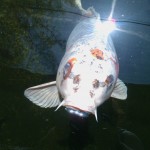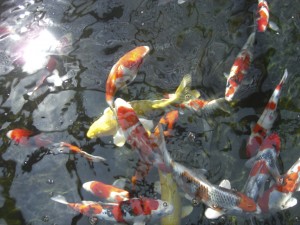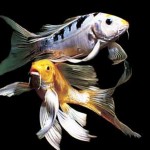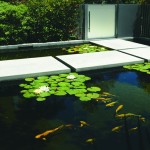Breeding Age: Females over 3 years and Males at least 2 Years
Sexing koi smaller than 10 inches in length is impossible, because they are sexually immature. Once the koi grow to mature size, the ovaries in females and testes in males begin to develop. Female koi are way easier to spot because the ovaries are a much larger organ than the testes and it makes the females belly look more plump rather than how the male has a torpedo shape.
The males develop breeding tubercles on the head and pectoral fins when they are ready to spawn. The breeding tubercles materialize as raised spots making it look like Ichthyophtirius, which is a white spot. The tubercles are rough when touched and are in rows. The male koi nudge the female with his head and fins to persuade her spawn with this breeding ritual.





